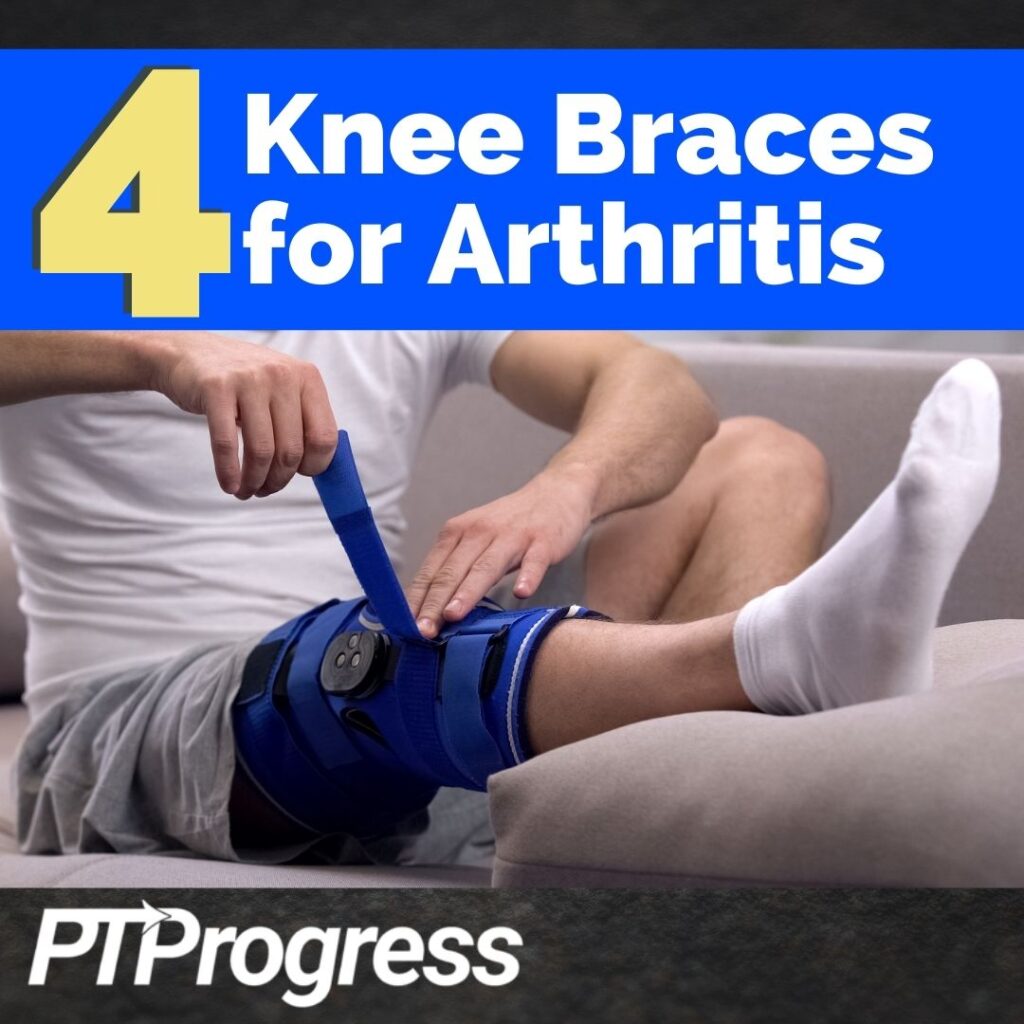
If you have arthritis, a knee brace can provide support and pain relief for all kinds of daily activities. In this article I’ll explain the benefits of a knee brace and introduce 4 of the best knee braces for arthritis.
The Best Knee Brace for Arthritis: 4 Options
Neenca Professional Knee Brace
Nylon and Silicone | 6 sizes | 7 colors | $16-21
Usually a compression sleeve isn’t much more than a tight tube of fabric, but the Professional Knee Brace from Neenca has nearly all the bells and whistles of a medical-grade knee brace. Two metal springs on either side of the knee provide lateral stabilization while a patella gel pad contours to your knee for additional support.
The sleeve itself sports anti-slip silicone strips and popliteal perforation to facilitate airflow behind the knee. With the Neenca compression sleeve, you’ll enjoy 360º of insulated support and pain-relieving load distribution.
Best attribute: Material is high-quality and supportive
Main Complaint: Not adjustable, so you need to get the sizing perfect
PowerLix Knee Compression Sleeve
80% Nylon 20% spandex | 5 sizes | 3 colors | ~$15
Another knee brace to consider is the compression sleeve from PowerLix. Highly-rated for arthritis, this sleeve provides gentle compression and support for daily activities and light exercise.
If you do take this brace out for a jog, you’ll appreciate that the tight-knit nylon material both absorbs sweat and eliminates odor. It will also insulate your knee joint at the right temperature if chilly air tends to aggravate your arthritis.
Best attribute: Excellent for arthritis specifically
Main Complaint: Non-slip silicone strip may irritate skin
For other sizes and colors, follow this link.
Bodyprox Knee Brace
Neoprene and Silicone | 2 sizes | 1 color | $19
If pulling on a tight compression sleeve doesn’t appeal to you, a wraparound brace just might. Instead of relying on a sizing chart, with the Bodyprox Knee Brace you can adjust the straps to achieve a snug fit.
Although this wraparound brace covers less area than its sleeve counterparts, it has a competitively supportive design. Two spring stabilizers and a patella gel pad help keep the knee in place, while silicone strips prevent any slippage.
Best attribute: Adjustable and comfortable
Main Complaint: Velcro on straps wears out quickly
Mueller Self-Adjusting Knee Stabilizer
Neoprene blend | 1 size | 1 color | $15
A notable name in medical braces, Mueller offers a similar wraparound brace for just a few dollars less than the Bodyprox. Their adjustable sleeve also features spring stabilizers on either side of the kneecap and patella and popliteal openings for active comfort.
Made of a neoprene blend, the insulated, perforated sleeve helps keep the knee at an optimal yet breathable temperature. You can wear this brace beneath loose-fitting clothing or directly over thin fabric such as leggings.
Best attribute: Good value for price
Main complaint: Wears out quickly, runs big
Treating Your Arthritis Knee Pain
Now that you’ve found a knee brace that will provide compression, support, and pain relief, you have no excuse for not attempting some of these 7 knee-strengthening exercises. And if your knee pain persists when you’re not wearing your brace, you might consider electric stimulation through a personal TENS unit.
Prevalence of Arthritis
As the largest joint in the body, your knee is susceptible to a whole host of injuries. But perhaps one of the most common causes of knee pain is something that can sneak up on you with age and overuse: arthritis.
The CDC estimates that over 54 million adults suffer from arthritis in one form or another, and that tally will likely increase by 50% in the next twenty years. So if you’re one of the millions who deal with arthritis in the knee, or will develop it in the near future, you should consider supporting your knee with a brace.
How a Knee Brace Helps Arthritis
Although a knee brace won’t reverse the effects of degeneration or inflammation in your knee joint, it can certainly relieve pain and prevent further injury.
One of the most immediate benefits of a knee brace is compression, a therapy you may be familiar with from the RICE acronym (or its updated version, POLICE).
Useful for many musculoskeletal injuries, steady compression helps reduce pain by squeezing away excess fluid and inflammation. Once the swelling is down, you’ll have less discomfort and better blood circulation.
But when you have an injury in a large joint like the knee, you need to do more than just compress it. You also need to stabilize the joint and restrict movements that could cause further damage.
For instance, a knee brace with lateral stabilizers will help keep your knee from twisting, a movement that’s painful when you have arthritis. It will also help off-load your knee joint by distributing your weight to the rest of your leg, much like a back brace does for your gut.
Finally, wearing a restrictive garment increases your proprioception, or movement awareness. A knee brace can serve as a physical reminder to be more conscientious of your knee when going about your day.
How Long to Wear a Knee Brace
There’s no universal answer for how long you should wear your compression brace; be sure to consult your doctor for specific recommendations. In general, however, a compression sleeve can be worn for multiple hours each day, so long as the brace isn’t irritating your skin.
When wearing a knee brace, you may be tempted to take a rest and avoid exercise, but that’s the opposite of what you should do. Now that your knee is supported, you have every reason to go for a walk or perform some gentle knee-stabilizing exercises.
Inactivity will only lead to muscle atrophy and the potential for tears, sprains, or other injuries. There’s a fine line between being careful and being lazy.





